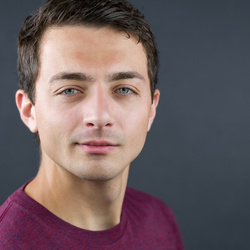Photographing skin with texture or wrinkles requires careful consideration of your lighting choices. Whether you want to emphasize the character of someone’s face or gently soften their features, understanding how light interacts with texture is essential.
Coming to you from Lindsay Adler with Adorama, this insightful video discusses three critical considerations when photographing skin with texture. Adler begins by addressing the quality of light, emphasizing the difference between hard and soft light. Hard light, like direct sunlight, accentuates every wrinkle and blemish by creating sharp shadows, making texture more pronounced. In contrast, soft light wraps around the subject’s face, smoothing out these details and creating a more flattering appearance. The choice between hard and soft light depends on your creative intention—whether you wish to highlight the intricate details of someone’s face or gently smooth them out.
Next, Adler shifts focus to the direction of light. The position of your light source relative to your subject plays a significant role in how texture is rendered in your photographs. Light that hits the face from the side or from above creates more shadows, thereby emphasizing texture. However, moving the light closer to the camera or lowering it can reduce these shadows, flattening the texture and softening the overall look.
Finally, Adler discusses the use of fill light. This technique involves adding light to reduce the contrast created by your primary light source, which can soften the appearance of wrinkles and other skin textures. Fill light can be added through additional lighting or by using reflectors to bounce light back onto the subject’s face. Adler demonstrates how to subtly enhance or reduce texture with fill light, showing the impact of different setups on the final image.
These three considerations—quality of light, direction of light, and fill light—are fundamental tools that allow you to tailor your portraits to best suit your subject’s features and the story you wish to tell through your image. Check out the video above for the full rundown from Adler.
If you would like to continue learning about how to light a portrait, be sure to check out "Illuminating The Face: Lighting for Headshots and Portraits With Peter Hurley!"







The value here is really showing the difference between a low fill light vs the bounced fill light from a vflat. I love the Vflat world vflat because you can fold them up and do exactly what Lindsay did here. Great demonstration!